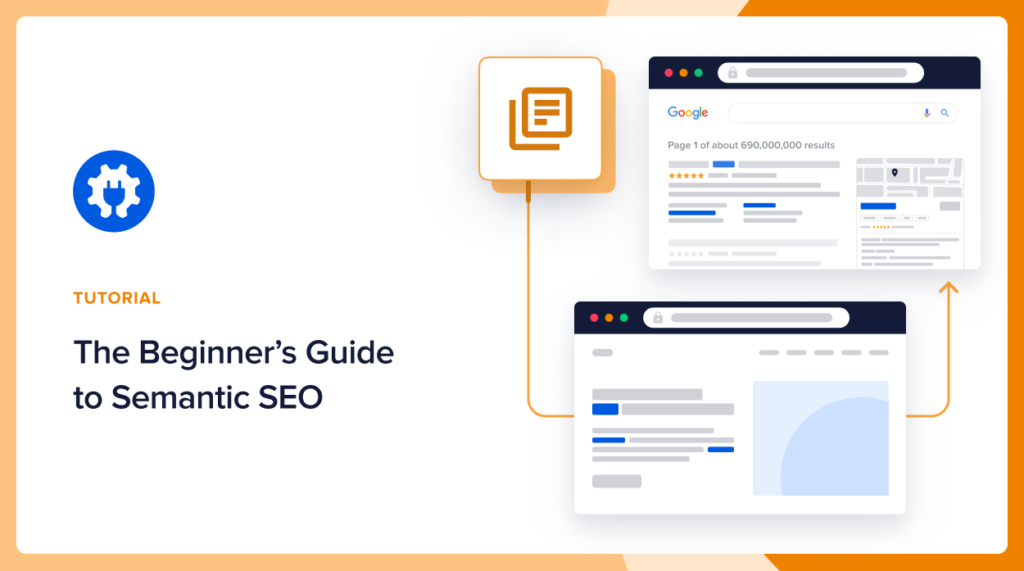Would you like to know what semantic SEO is and why you should adopt it?
With the competition for the top spot on search engine results pages (SERPs) becoming fiercer by the day, you should adopt best practices that give you an edge. Semantic SEO is one of them.
In this article, we’ll show you all you need to know to leverage semantic SEO for better rankings.
In This Article
What is Semantic SEO?
Semantic SEO, also known as semantic search, is a search engine optimization strategy focusing on understanding the intent and context of a user’s search query. It goes beyond just targeting specific keywords. Instead, it places a strong emphasis on the meaning and relationships between words. This helps search engines deliver more relevant and accurate results.
However, semantic SEO is not a new concept. It’s an evolution of search algorithms and SEO practices that have been refined over the years. Traditional SEO primarily revolves around optimizing web pages for specific keywords. Semantic SEO, on the other hand, resulted from advancements in search engines that help them better understand users’ queries beyond just keywords.
With the introduction of algorithms like Google’s Knowledge Graph, Hummingbird, RankBrain, BERT, etc, search engines began understanding the nuances of language and context. With the advent of generative AI, search engines like Google are now capable of creating AI-generated snippets of responses to user queries.
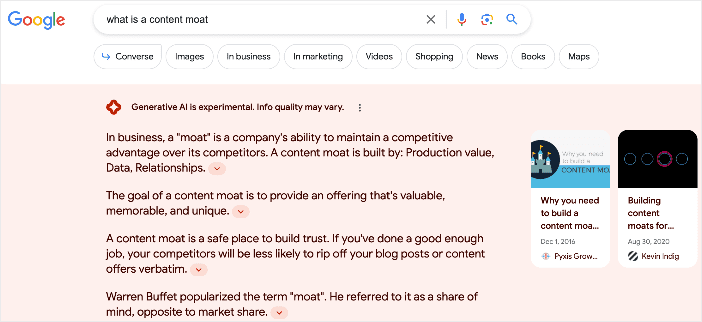
This makes semantic SEO a necessity if you want to rank high on SERPs.
Semantic SEO vs. Traditional SEO: What’s the Difference?
There are many differences between semantic SEO and traditional SEO. However, the most significant is that traditional SEO is keyword-centric, while Semantic SEO is context-centric. This means traditional SEO focuses on optimizing pages for specific keywords. Semantic SEO, on the other hand, places a greater emphasis on understanding search intent (user intent) and providing comprehensive and valuable content.
Semantic SEO also leverages technologies like artificial intelligence (AI), natural language processing (NLP), machine learning, and latent semantic indexing (LSI) to recognize the relationships between words and entities, offering a more holistic approach to content optimization.
The Benefits of Semantic SEO
So, why should you consider incorporating Semantic SEO into your digital marketing strategy?
Here are some compelling benefits:
- Better search rankings: Semantic SEO helps your content rank higher in search engine results by providing more relevant and comprehensive answers to user queries.
- Rank for more keywords: Because of focusing on the broader context and not just individual keywords, semantic SEO helps you rank for more keywords.
- Increased organic traffic: Because semantic SEO helps you rank for more keywords, you can capture more organic search traffic.
- Enhanced user experience: By delivering content that directly addresses the user’s needs, you can improve user satisfaction and engagement.
- Future-proofs your SEO wins: As search engines continue to evolve and advance, Semantic SEO ensures your content remains optimized for the ever-evolving landscape.
If you want to run an impactful SEO strategy, semantic SEO must be part of it.
Semantic SEO Best Practices
Now that you understand the importance of Semantic SEO, it’s time to explore best practices for implementing it effectively.
1. Use the Right WordPress SEO Tool
One of the first semantic SEO best practices to adopt is to use the right SEO plugin. For WordPress users, it doesn’t get better than All In One SEO (AIOSEO).
AIOSEO is a powerful yet easy-to-use SEO plugin that boasts over 3 million active users. This means millions of smart bloggers use AIOSEO to help them boost their search engine rankings and drive qualified traffic to their blogs. The main reason for this is the plugin has many powerful features and modules designed to help you properly configure your SEO settings. Examples include:
- Search Statistics: This powerful Google Search Console integration lets you track your keyword rankings and see important SEO metrics with 1-click and more.
- SEO Revisions: Track any changes you make to your site and see their impact on your SEO. Plus, you get to see on a timeline how Google updates affect your site.
- Advanced Robots.txt Generator: Easily generate and customize your robots.txt file for better crawling and indexing.
- TrueSEO Highlighter: Makes it easy to spot on-page SEO issues and gives recommendations for fixing them.
- Next-gen Schema generator: This no-code schema generator enables users to generate and output any schema markup on your site.
- Redirection Manager: Helps you manage redirects and eliminate 404 errors, making it easier for search engines to crawl and index your site.
- Link Assistant: Powerful internal linking tool that automates building links between pages on your site. It also gives you an audit of outbound links.
- SEO Preview: This gives you an overview of your search and social snippets and general SEO so you can improve your optimization.
- IndexNow: For fast indexing on search engines that support the IndexNow protocol (like Bing and Yandex).
- Sitemap generator: Automatically generate different types of sitemaps to notify all search engines of any updates on your site.
- And more.
AIOSEO also has other powerful tools to help you master your on-page SEO, off-page SEO, and even technical SEO. Despite being feature-rich and powerful, AIOSEO is a no-code SEO plugin. This means anyone can use the plugin to boost their semantic SEO, even without technical or coding knowledge.
For step-by-step instructions on how to install AIOSEO, check out our installation guide.
2. Create Cornerstone Content
One of the primary pillars of semantic SEO is cornerstone content.
Cornerstone content refers to the foundational set of web pages or articles on your website. These are typically comprehensive, in-depth, and highly informative, covering the core topics or themes central to your site’s overall subject.
These cornerstone content pieces will be the foundation for your semantic SEO strategy.
Creating cornerstone content is super easy if you have a powerful WordPress SEO plugin like AIOSEO. One of its most-loved features is the revolutionary Cornerstone Content module. This enables you to mark pillar posts and pages as cornerstone content easily.
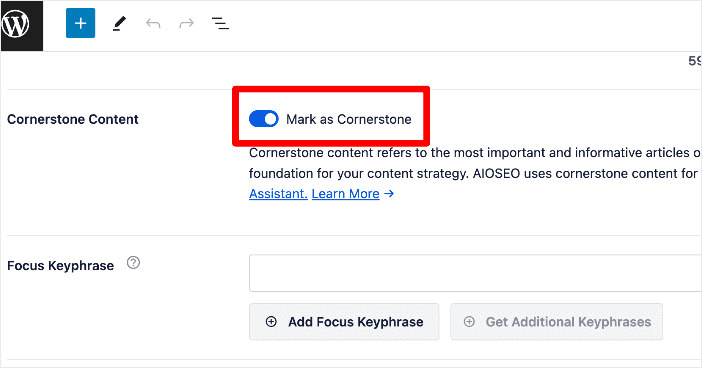
Marking your post/page as cornerstone content gets it added to a new post list filter dedicated to cornerstone content.
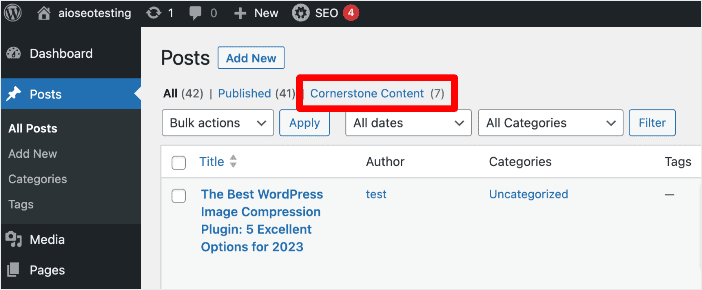
This filter makes it easy to keep tabs on the performance of your cornerstone content.
But more importantly, marking your content as cornerstone content makes it easy for you to build internal links to it. These signal to search engines that these pages are important. It also helps distribute link juice on your site, thereby boosting the search rankings of the entire site.
Check out our tutorial on using the Cornerstone Content module in WordPress for more instructions.
3. Build Topic Clusters
Once you’ve identified or created your cornerstone content, the next step is to build topic clusters around each of your primary posts and pages.
Topic clusters are a group of relevant content pieces that comprehensively cover a subject from many angles and are interlinked. Every topic cluster is organized the same way.
- Cornerstone content (pillar page): The pillar page is the hub of the topic cluster. This page covers the main subject in-depth, with each subheading briefly addressing related subtopics.
- Subtopic pages: Subtopic pages are the pieces of content you create to provide in-depth coverage of a single aspect of the main subject and link to the pillar page.
Once you’ve built your pillar pages and subtopics, create strategic internal links between them. You can automate this by using AIOSEO’s Link Assistant module.
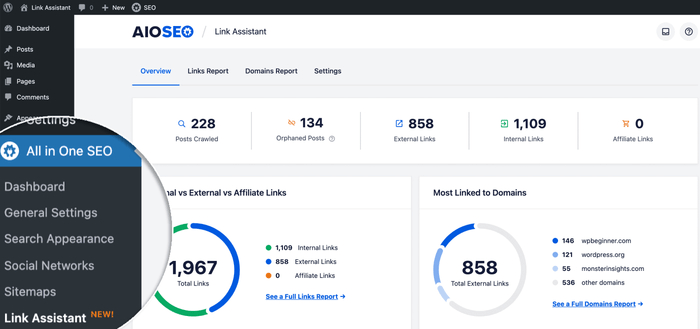
Building topic clusters helps you cover your topic comprehensively, giving your semantic SEO a boost. It also helps enhance your topical authority.
The key to creating effective topic clusters is conducting thorough keyword research on all possible subtopics you can cover. Once that’s done, create high-quality content that covers those topics thoroughly.
4. Use LSI Keywords
Because of Google’s improved algorithms and NLP models, there is no need for SEOs to practice keyword stuffing to achieve better rankings. Thanks to advanced semantic analysis, search engines are smart enough to understand synonyms and related terms.
This is why incorporating latent semantic indexing (LSI) keywords within your content is important to your semantic SEO.
LSI keywords are words and phrases that are conceptually related to your primary keyword or topic. They can also be called related keywords and are important because they help search engines understand the context and relevance of your web page’s content. This understanding goes beyond merely matching exact keyword phrases, allowing search engines to provide more accurate and meaningful search results to users.
If you’re a WordPress and Semrush user, adding LSI keywords is super easy using AIOSEO. With your page open in editor mode, you can get more keywords by scrolling down and clicking the Get Additional Keyphrases button.

For more information on how the AIOSEO/Semrush integration works, check out this documentation.
You can then add these additional LSI keywords to your post. Plus, AIOSEO’s TruSEO On-page Analysis will help you optimize your content for your primary and LSI keywords.
5. Add Schema Markup to Your Content
Adding schema markup is another excellent way to enhance your semantic SEO.
Schema markup, often called Schema.org markup or structured data, is a semantic vocabulary (code) used to provide search engines with specific details about the content on a web page. In short, it makes it easier for search engines to understand your content.
Despite schema markup being code, you don’t need coding knowledge to implement it. You simply need to use an SEO plugin that supports it. Adding schema markup is super easy with AIOSEO’s Next-gen Schema Generator. This no-code module adds the schema code for you in the background. All you have to do is choose your schema type in the Schema Catalog.

Adding schema markup is also a great way to enhance your chances of getting rich snippets and featured snippets.
Check out this tutorial for detailed instructions on adding schema markup in WordPress.
6. Optimize for “People Also Ask” Questions
People Also Ask (PAA) refers to related questions searchers may have about your particular topic.
The PAA section of Google’s SERPs is a prominent feature that gives publishers an opportunity to bolster their visibility on search engines further.
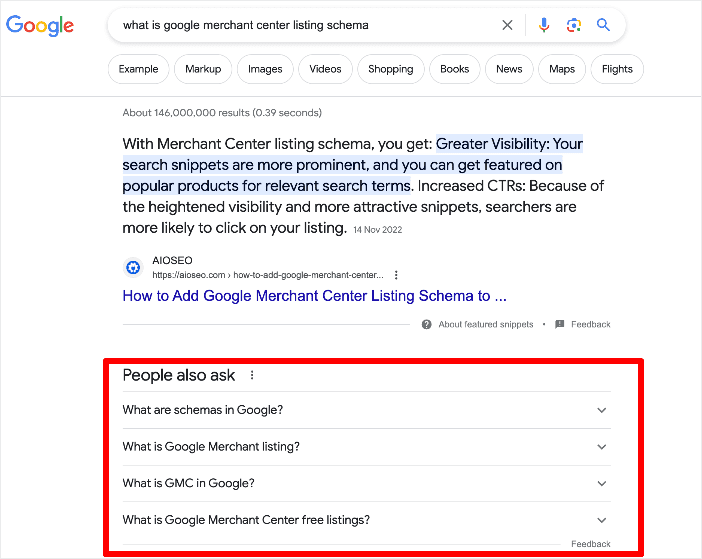
Optimizing for it is also a great way to bolster your semantic SEO strategy. This is because answering the common questions users ask in relation to your primary keyword helps you create content with semantic depth. It also helps you capture traffic for long-tail keywords.
You can check out our guide to optimizing for Google’s People Also Ask section for step-by-step instructions.
Semantic SEO: Your FAQs Answered
What is semantic SEO?
Semantic SEO is a strategy that focuses on understanding the intent and context of user search queries to provide more relevant and accurate search results.
What are the benefits of semantic search?
Semantic search improves search visibility, enhances user experience, and future-proofs your SEO efforts. It helps you continue ranking well despite Google algorithm updates shaking some sites’ rankings on SERPs.
What are the best tools for enhancing semantic SEO?
All In One SEO (AIOSEO) is one of the best tools to help you enhance your semantic SEO strategy. It has many features and modules like Cornerstone Content, Link Assistant, and more that are designed to improve the way search engines understand your site. Other tools include keyword research tools like Semrush, Ahrefs, and more.
Semantic SEO: Supercharge Your Rankings and Traffic
Semantic SEO is an often overlooked SEO strategy but with massive benefits. With the tips outlined above, use them to supercharge your search rankings and organic traffic.
We hope this post helped you learn the basics of semantic SEO. You may also want to check out other articles on our blog, like our ultimate link-building guide or ultimate WordPress SEO checklist.
If you found this article helpful, then please subscribe to our YouTube Channel. You’ll find many more helpful tutorials there. You can also follow us on X (Twitter), LinkedIn, or Facebook to stay in the loop.
Disclosure: Our content is reader-supported. This means if you click on some of our links, then we may earn a commission. We only recommend products that we believe will add value to our readers.
